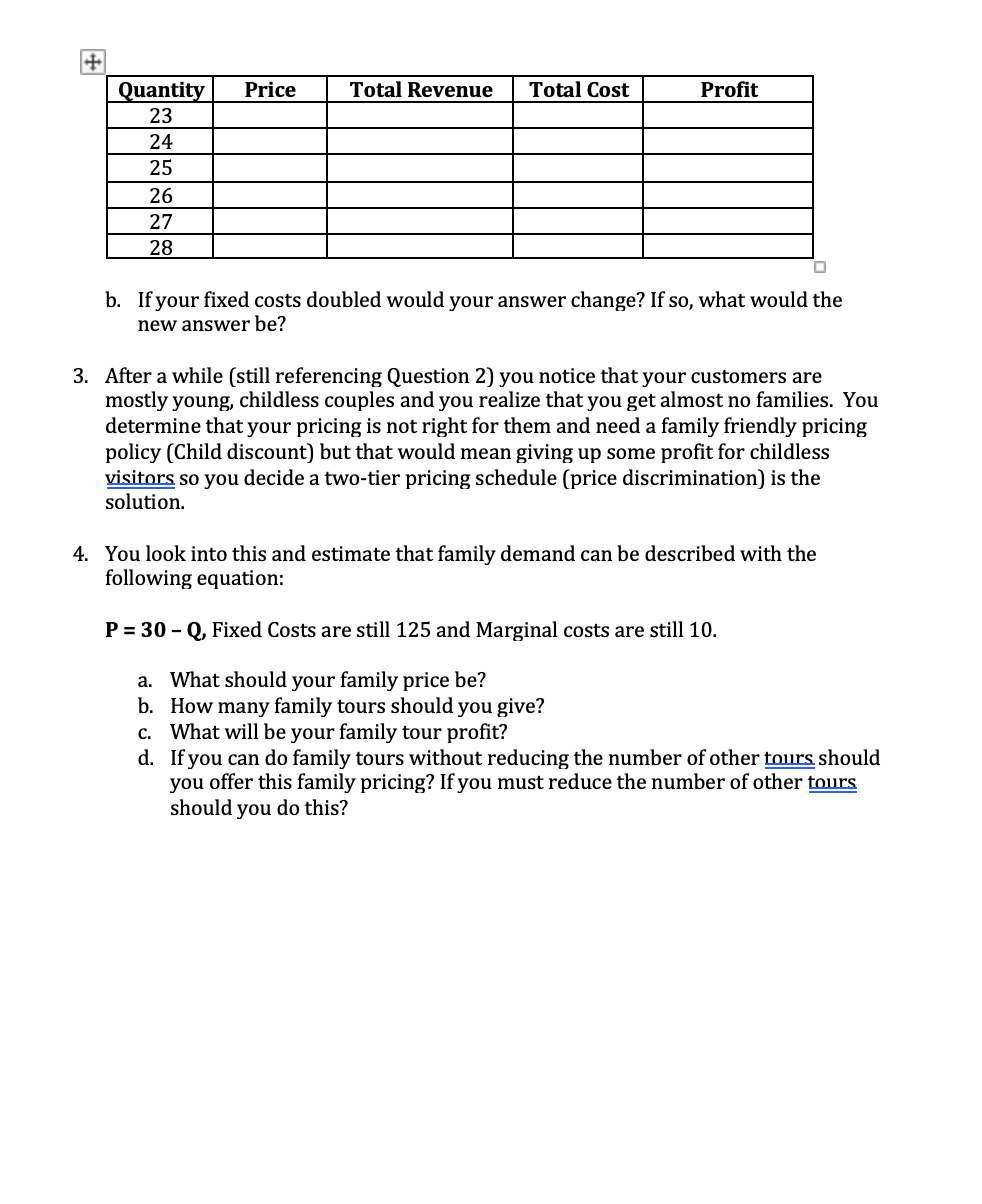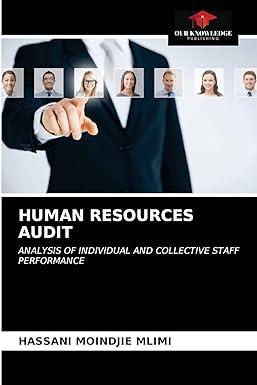

 undefined
undefined
1. There is a strong impulse in politics and the country as a whole to Buy American, that is as much as possible buy good manufactured in the United States. A parallel movement is the Buy Local movement which urges people to buy as much as possible from local stores and locally grown food. Some grocery stores even put up signs and posters informing customers where the produce on sale was grown. a. Is this correct economic thinking? If so, how far do we take it, should we only consume what the people in our neighborhood produce? b. What is right or wrong with this approach? In answering this address the impact Buy Local will have on the following factors: i. Selection/Choice (think about food and seasonality) ii. Prices iii. Quality 2. You are an entrepreneur running a small business selling tours of a historic site and museum and have found from experience and careful tracking that your daily demand curve can be described with the following equation: P = 60-Q, that is if your price was 0 you would be giving away tours and 60 tour groups would visit your establishment. You also know you have Fixed costs of 125 (upkeep, etc.) and Marginal cost of 10 (wage of tour guides) a. Your market research informs you that you should expect somewhere between 23 and 28 tours a day over the next month. You have some control over this amount, with prior bookings and how much time you put between tours etc. So how many tours should you book each day to maximize your profits? What will price will you charge? How much profit will you earn? Use the information above table below and the formulas in the book/class to fill in this chart and answer this question. Just filling out the table is sufficient as long as you clearly indicate your decision that answers the questions. 5. There has been a proliferation of cable and television offerings in the last 20 years There are a la carte options but bundling seems to be the main way television stations are offered, let's find out why in a simple example. So, we have three networks available and three customers with preferences expressed in the highest price they are willing to pay as shown in the table below: Network A&E C-SPAN The Food Network Bill 4 12 10 Pete 12 6 3 Joe 8 4 15 The Bundle 26 21 27 Priced individually (a la carte) the networks charge the following prices A&E - $8 C-SPAN - $4 Food - $10 (MC = 0 to add a new subscriber, most of the costs on TV is fixed costs) a. Are these profit maximizing prices? (Remember the table is showing willingness to pay not what they are actually paying) b. Who subscribes to which network(s)? c. What are the total profits earned? d. If the provider bundles these three networks it can charge $21 and get all three subscribers for all three networks. What profit does the provider earn with the bundle? e. Compare Consumer Surplus under a la carte and bundle, which is higher? Would you say consumers are better off or worse off with the bundle? Why or why not? (keep in mind there are more things to consider than just cons mer surplus) 1. There is a strong impulse in politics and the country as a whole to Buy American, that is as much as possible buy good manufactured in the United States. A parallel movement is the Buy Local movement which urges people to buy as much as possible from local stores and locally grown food. Some grocery stores even put up signs and posters informing customers where the produce on sale was grown. a. Is this correct economic thinking? If so, how far do we take it, should we only consume what the people in our neighborhood produce? b. What is right or wrong with this approach? In answering this address the impact Buy Local will have on the following factors: i. Selection/Choice (think about food and seasonality) ii. Prices iii. Quality 2. You are an entrepreneur running a small business selling tours of a historic site and museum and have found from experience and careful tracking that your daily demand curve can be described with the following equation: P = 60-Q, that is if your price was 0 you would be giving away tours and 60 tour groups would visit your establishment. You also know you have Fixed costs of 125 (upkeep, etc.) and Marginal cost of 10 (wage of tour guides) a. Your market research informs you that you should expect somewhere between 23 and 28 tours a day over the next month. You have some control over this amount, with prior bookings and how much time you put between tours etc. So how many tours should you book each day to maximize your profits? What will price will you charge? How much profit will you earn? Use the information above table below and the formulas in the book/class to fill in this chart and answer this question. Just filling out the table is sufficient as long as you clearly indicate your decision that answers the questions. 5. There has been a proliferation of cable and television offerings in the last 20 years There are a la carte options but bundling seems to be the main way television stations are offered, let's find out why in a simple example. So, we have three networks available and three customers with preferences expressed in the highest price they are willing to pay as shown in the table below: Network A&E C-SPAN The Food Network Bill 4 12 10 Pete 12 6 3 Joe 8 4 15 The Bundle 26 21 27 Priced individually (a la carte) the networks charge the following prices A&E - $8 C-SPAN - $4 Food - $10 (MC = 0 to add a new subscriber, most of the costs on TV is fixed costs) a. Are these profit maximizing prices? (Remember the table is showing willingness to pay not what they are actually paying) b. Who subscribes to which network(s)? c. What are the total profits earned? d. If the provider bundles these three networks it can charge $21 and get all three subscribers for all three networks. What profit does the provider earn with the bundle? e. Compare Consumer Surplus under a la carte and bundle, which is higher? Would you say consumers are better off or worse off with the bundle? Why or why not? (keep in mind there are more things to consider than just cons mer surplus)


 undefined
undefined





